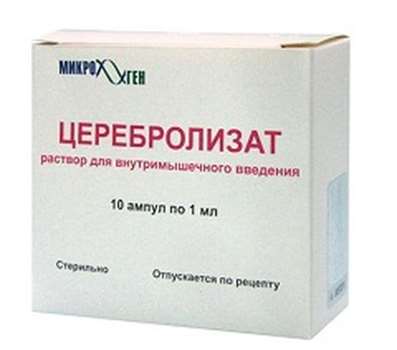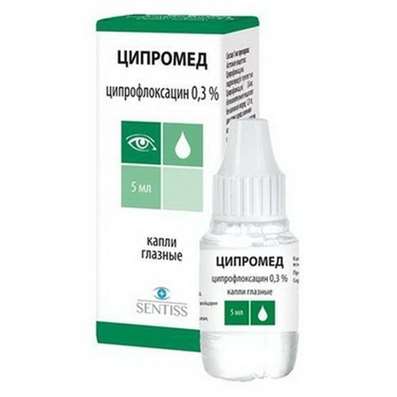Mildronate - Use of Correctors of Cell Metabolism Under Hypoxia
13 Oct 2016
Treatment of diseases caused by arteriosclerosis, especially coronary heart disease (CHD) and cerebro-vascular disease, over long periods of time was considered from the standpoint of improving blood flow and reduction of ischemic tissue oxygen requirements.
However, ATP Survey (Angina Treatment Patterns) study conducted under the auspices of the working group of the European Society of Cardiology, which examined the results of drug therapy of angina, it was shown that the appointment of a sick modern combination therapy hemodynamic effect of the drug does not lead to the complete elimination of angina attacks . TIBET study that compared Atenolol effects of Nifedipine SR, and combinations thereof, has not revealed the benefits of combining these drugs monotherapy before each of them. It turned out that drugs hemodynamic actions and means of neuro-hormonal blockade enough influence on the metabolism of target organ cells, so their use is not always possible to achieve sufficient positive dynamics. Besides, they have limitations, contraindications and side effects, particularly in terms of their combined use.
Thus, despite the introduction of new medicines and the successes achieved in the pharmacotherapy of ischemic heart disease, cerebro-vascular disease, and other clinical conditions associated with tissue ischemia, the effectiveness of their treatment is inadequate, and the mortality from them - high [3]. In this regard, in recent decades the attention of pharmacists and clinicians was aimed at the creation and implementation into medical practice cytoprotectors - tools that are capable of reducing disturbances of cellular metabolism and function of cell membranes, particularly cardiomyocytes, preventing the development of irreversible processes in them.
The origins of metabolic therapy can be considered the use of glucose-insulin-potassium mixture that in 1962 a group of scientists led by D. Sodi-Pallaris applied for the first time for the treatment of patients with acute myocardial infarction and established its positive impact on the dynamics of the ECG and early survival of patients [5]. Later attempts were made to use of Adenosine Triphosphate (ATP), Riboxinum intermediate substrates of the Krebs cycle, which have not been successful, as these substances do not penetrate the cell membrane and mitochondrial.
Currently, the main focus in improving energy use cardio-cytoprotectors infarction is able to adjust the energy and metabolic processes in the myocardium. The latter include drugs that improve the tolerability of myocardial ischemia periods, and retains the functional activity of the myocardium during hypoxia.
It is found that for an adequate blood supply to the myocardium ATP synthesis is mainly done by fatty acid oxidation, which requires a large amount of oxygen. In pathological conditions associated with chronic hypoxia-ischemia and infarction, activates the glycolytic pathway for the formation of adenosine triphosphate, and in severe ischemia of the main possible the synthesis of adenosine triphosphate mechanism becomes anaerobic glycolysis to produce ATP and simultaneous accumulation of lactate and pyruvate. When oxygen deficiency occurs in cardiomyocytes, inhibition of pyruvate dehydrogenase, pyruvate utilization disturbed, whereby it is converted to lactate. Last accumulates in the cytosol and leads to a reduction of intracellular pH and structural and functional disorders of cardiomyocytes. Tissue acidosis contributes to the uncoupling of oxidative phosphorylation and excess calcium ions in cardiomyocytes. This results in the activation of lipid peroxidation and damage to membrane structures of cardiomyocytes.
When myocardial hypoxia impaired fatty acid oxidation and the formation of intermediate products of their metabolism, which inhibit the enzyme systems that ensure the transfer of high-energy phosphates, exacerbating an energy deficit in the myocardium and promotes the buildup of acidosis. Accumulates in the mitochondria of cardiomyocytes large amount of oxidized fatty acids has a destructive effect on cell membranes. Thus, the lack of oxygen promotes the accumulation of fatty acids in mitochondria, and the increase in the intracellular concentration of the fatty acids leads to the inhibition of glucose utilization and production rate of adenosine, promotes an increase in membrane permeability to calcium ions enhances the b-adrenergic response infarction. fatty acid damaging effect is realized in several ways: inhibition of glucose utilization and formation of adenosine triphosphate speed uncoupling oxidation and phosphorylation in the electron-transport chain in the mitochondria, disturbance membrane enzymes properties, increased membrane permeability to calcium ions and its associated gain b-adrenergic response.
Thus, when the myocardium becomes ischemic appropriate restriction fatty acid oxidation in mitochondria cardiomyocytes. In this regard, in the arsenal of tools to positively influence the metabolism of myocardium in ischemia, new drugs - partial fatty acid oxidation inhibitors (partial fatty acid oxidation inhibitors - p-FOX), which belongs to the class of antianginal drugs. Representatives of this group of drugs or retard the rate of fatty acid oxidation in mitochondria (Trimetazidine), or restrict their transport into mitochondria. The latter belongs to the original drug Mildronate (Meldonium) production of JSC "Grindeks" (Latvia).
Mildronate is reversible limits the rate of biosynthesis of Carnitine from its predecessor - the gamma-butyrobetaine. Consequently, the broken-carnitine mediated transport of long chain fatty acids across the mitochondrial membrane, without affecting the metabolism of short chain fatty acids. Before the drug Mildronate unlike trimetazidine in mitochondria does not increase the concentration of oxidized intermediates of fatty acid metabolism of foods that can be a source of formation of toxic lipid peroxides.
Partial blockage of fatty acid oxidation includes an alternative energy system of education - the oxidation of glucose, which is much more efficient use of oxygen for ATP synthesis. Oxidation of glucose metabolic chain synthesis requires ATP per molecule of ATP 35-40% less oxygen than fatty acid oxidation, said oxygen savings is provided not only by the metabolic characteristics of glucose oxidation cycle (up to 20%), but also by lack of need for receipt of fatty acids into the mitochondria (about 15-20%), active transport requires ATP deficient in hypoxic conditions.
The mechanism of the effect of the drug Mildronate is based on the transport of fatty acids into the mitochondria.
Discuss another mechanism of action of the drug Mildronate is the ability to reduce the rate of inactivation of nitric oxide free radicals.
The ability of the drug Mildronate influences on metabolic energy chain provides the full functionality of the cells under hypoxic conditions, which is achieved by reducing the activity of costly oxygen oxidation of fatty acids and activation of a more favorable glycolytic pathway of energy production, the effect of preconditioning (improving the heart's ability to adapt to by the biochemical 'willingness to hypoxia conditions "without serious consequences to withstand longer periods of ischemia), induction of biosynthesis of nitric oxide and decrease peripheral vascular resistance.
Mildronate improves energy metabolism in the myocardium, that allows the use of the drug for chronic forms of coronary artery disease, chronic heart failure of ischemic origin, for the correction of metabolic disturbances by the target organs in arterial hypertension (AH). It should be noted that the process of left ventricular remodeling in patients with arterial hypertension accompanied by changes in geometry of the heart chambers, impaired systolic and diastolic functions of the myocardium and the subsequent development of heart failure [28-32]. High levels of free radicals in patients with hypertension and coronary heart disease negatively affects the clinical course of the disease, activating the processes of coagulation, inhibiting the synthesis of nitric oxide, reducing the sensitivity of baro-receptor NO- and the vascular wall. In addition, free radical modification of low density lipoproteins and membranes of endothelial cells in ischemic heart disease and hypertension has a strong pro-atherogenic effect and contributes to the progression of atherosclerosis.
Of great interest is the ability Mildronate described the drug to enhance the effectiveness of antihypertensive therapy in the treatment of angiotensin converting enzyme inhibitors, improve the circadian blood pressure profile in patients with hypertension, reduce the severity of vascular endothelial dysfunction, reduce the number of people with the most dangerous in terms of stroke nighttime blood pressure profiles ( " Knight-picker "," over-dipper "). With prolonged use of Mildronate remodeling speeds of the left ventricle on the background of achieving the target level of blood pressure. Mildronate due to the unique characteristics of its mechanisms of action in these clinical situations is the drug of choice among other cardio-metabolic means [13, 33-35].
The clinical studies demonstrated the efficacy of cytoprotector Mildronate to patients with stable angina, in particular, its positive effect on exercise tolerance, reduction of clinical manifestations of angina, reduction in nitrates requirements. These positive clinical effects have been associated with the ability of the drug to improve the functional state of the vascular endothelium and inhibit the processes of free radical oxidation. Feasibility of drug Mildronate destination is based on the fact that inhibition of the synthesis of carnitine leads to an accumulation of y-butyrobetaine, able to stimulate acetylcholine receptors, resulting in the synthesis of nitric oxide is activated that causes the vasoprotective effects and antioxidant drug Mildronate.
Established that Mildronate reduces peripheral vascular resistance, eliminates the vasospasm induced by epinephrine and angiotensin II, Meldonium inhibits platelet aggregation. As shown by in the early 2000s, research, application Mildronate (Meldonium) for hypertension in combination with basic therapy helped to reduce blood pressure levels, an increase in the number of people with target blood pressure numbers. Hypertensive patients with stable angina drug at the same time reduces the number of angina attacks and nitroglycerin amount received per day, increased exercise tolerance. There is evidence of the effectiveness of Mildronate in treatment of chronic heart failure, myocardial infarction, stroke.
Given the nature of the drug pharmacodynamics Mildronate and universal complex effect on ischemic myocardium and the vascular wall, the local comprehensive detailed randomized studies have been made of its clinical efficacy in patients with cardiovascular disease. Comparative evaluation of efficacy Mildronate to CHD patients with stable angina showed that its use in chronic coronary artery disease traditional therapy helped improve the effectiveness of anti-anginal therapy, significantly reduce the dose of short-acting sublingual nitro-preparations.
Of particular interest are the results of a recently completed international, multicenter, randomized, double-blind, placebo-controlled clinical trial MILSS II, which has been shown that taking Mildronate drug in the treatment of stable angina in combination with standard therapy leads to a significant improvement of patient's condition and improve his quality of life. The main objective of the study was to assess the effectiveness of the drug Mildronate against coronary heart disease and the effect of the drug Mildronate symptoms on exercise tolerance in patients with stable angina. Research MILSS II was conducted in accordance with the rules of Good Clinical Practice (ICH / GCP) and the requirements of the regulations of the European Union of 37 research centers of four countries - Latvia, Lithuania, Russia and Ukraine. The study involved 278 patients with chronic ischemic heart disease (stable angina II and Class III, Canadian Cardiovascular Society). The period of the study was 13 months, 4 weeks preparation period and 12 months of randomized treatment - double-blind treatment. The main objective method for studying the tolerance of patients is velo-ergometry method was chosen to exercise stress. All patients received standard antianginal treatment (beta-blockers, aspirin, statins, angiotensin-converting enzyme inhibitor or angiotensin II receptor antagonist). MILSS II study results showed that standard therapy in combination with Mildronate drug improves patient tolerance to physical activity, increases the time to occurrence of angina attack and before the emergence of ST-segment depression, and improves patients' quality of life.
Improving the energy exchange in the myocardium in patients receiving the drug Mildronate® in stable angina combined with improved systolic and diastolic function of the left ventricle of the heart: an increase in left ventricular ejection fraction, and a decrease in pulmonary artery pressure. In patients with coronary artery disease Mildronate use of the drug in a daily dose of 1000 mg for 6 weeks on a background of basic therapy leads to a significantly more pronounced compared to the control group, an increase in test distance with a 6-minute walk test, ejection fraction, stroke volume and velocity of circulatory contraction of the myocardium fibers left ventricle.
Of particular importance the use cardioprotectors gains in coronary angioplasty as percutaneous coronary intervention and coronary artery bypass grafting is associated with the development of complications of the cardiovascular system - myocardial dysfunction with the development of the syndrome of "stunned myocardium", accompanied by a violation of local contractility of the left ventricle, impaired hemodynamics and various arrhythmias. According to modern concepts, ischemic and reperfusion myocardial changes, including during coronary revascularization, developed as a result of violations of cardiomyocyte metabolism. Going normal metabolism to anaerobic pathway in ischemia, as well as the accumulation of excessive amounts of free fatty acids in the reduction of coronary blood flow contribute to a number pathobiochemical and pathophysiological changes leading to disruption of myocardial contractility, changes in the bioelectric activity of cardiomyocytes, and the development of dangerous cardiac arrhythmias . To correct the above pathological changes of great importance is the normalization of metabolism of cardiomyocytes, which was confirmed by the results of a clinical study carried out on the basis of GOU VPO "Russian State Medical University." The study involved 149 patients with stable angina FC II and III at the age of 41 to 75 years who underwent coronary artery bypass grafting with cardiopulmonary bypass or percutaneous coronary intervention. Patients of the first group (n = 79 people) for 10-15 days prior to revascularization to drug therapy, used to treat stable angina (nitrates, beta-blockers, aggregation inhibitors, angiotensin converting enzyme inhibitors, antiarrhythmics), was added Mildronate ( Meldonium) at a dosage of 750 mg per day for three days, and then - 750 mg a day, two times a week. The results of the above work Mildronate demonstrate the ability of the drug to reduce the degree of myocardial hibernation in chronic ischemia, as evidenced by the increase in overall and local contractility of the left ventricle. When coronary angioplasty inclusion Mildronate drug in the preoperative and postoperative therapy can accelerate the recovery of the contractile function of the myocardium on the background of improving coronary blood flow and thus increases the efficiency of coronary revascularization. Clinically it seems justified introduction cytoprotectors in pre- and postoperative period during routine angioplasty in patients with angina for the correction of reperfusion arrhythmias. It proved that Mildronate more than trimetazidine, reduces the level of lipid peroxides in the blood due to the activation of enzymes antioxidant and improves the functional activity of the myocardium in the postoperative period.
Currently, one of the key problems of the world of medicine is a comorbidity. There is a widespread combination of coronary artery disease, hypertension, diabetes mellitus (DM) type 2 and chronic heart failure (CHF). These diseases have a close pathogenetic relationship. They are characterized by endothelial dysfunction with marked predominance of vasoconstrictor and prothrombotic responses, microcirculatory disorders, ischemia of organs and tissues, metabolic disorders.
Diabetes mellitus is one of the leading risk factors of progression of lesions of the cardiovascular system, which is based on the intracellular metabolic disorders. Diabetes significantly complicates the course of coronary artery disease and hypertension, contributing to the rise of endothelial dysfunction, accelerate the development of atherosclerosis and coronary artery trunk, worsening hypoxia in the myocardium, activation of free radical oxidation, oxidative stress weighting on the background of significant decrease of the activity of enzyme systems of antioxidant protection. Disorders of carbohydrate metabolism are largely reflected in the course of chronic heart failure. In this regard, the use of correctors of metabolism in patients with cardiovascular diseases in conjunction with diabetes seems justified. Proof of this are the results of a randomized trial, which was attended by 100 patients aged 45-70 years suffering from ischemic heart disease with CHF II and III functional class classification PRAs (2002) and diabetes type 2 in the stage of compensation or subcompensation carbohydrate metabolism. A
ll patients suffering from chronic heart failure, received basic therapy with Enalapril, Bisoprolol, aspirin, simvastatin. If necessary, prescribed diuretics and nitrates. For correction of disorders of carbohydrate metabolism was carried out mono- or combination therapy with Metformine and Gliclazide. Half of the patients treated supplemented Mildronate drug in a daily dose of 1000 mg for 3 months. It was noted that the downward trend under the influence of the drug Mildronate (Meldonium) glycated hemoglobin in the blood. The positive effect of the drug Mildronate as part of a combined treatment of chronic heart failure in patients with type 2 diabetes on lipid profile, which was reflected in the reduction of triglycerides and very low density lipoproteins, while the control group had no significant changes were observed in lipid profile parameters. The study found that taking the drug Mildronate accompanied by a slight increase in activity of key antioxidant enzymes in red blood cells - catalase and superoxide dismutase; comparing the variations in the group activity of these enzymes is detected. The dynamics of the activity of antioxidant enzymes was accompanied by a decrease in the blood level of peroxidation products: in the main group the concentration of diene conjugates was reduced by 41% in the control group - only 20%. Assessing the impact of the drug Mildronate (Meldonium) the clinical course of ischemic CHF in patients with type 2 diabetes with cardiac autonomic neuropathy showed that basic therapy Mildronate after 16 weeks of treatment contributed to a decrease in the variability of cardiac arrhythmias.
Much attention is paid to the study of antiarrhythmic drug effectiveness Mildronate to CHD patients: in a number of studies demonstrated the ability of the drug on background of Mildronate is conventional antianginal therapy including beta-blockers, to reduce the frequency and duration of periods of arrhythmias, predominantly ventricular arrhythmia. The greatest effect of the drug was observed in patients without previous myocardial infarction and post-infarction left ventricular aneurysm.
One of the serious complications of comorbidity is acute cerebral circulatory distress. Use of the drug Mildronate in acute ischemic stroke in a daily dose of 1000 mg for 20 days, has a statistically significant positive impact on the severity of neurological disorders. In the treatment of drug Mildronate by single photon emission computed tomography found an increase in cerebral perfusion in areas of its original reduction, the relevant ischemic lesion. The most significant improvement was observed in cerebral blood flow in patients with ischemic stroke, the type of cardiogenic embolism, ie, in the absence of intracerebral lesions of small or major cerebral arteries. Use of the drug contributed to the enhanced activity and attention. In patients with increased tempo of assignments re-switchievness, improves memory, which was due to the improvement of neurodynamic background [64]. It was found that the use of Mildronate drug in the treatment of ischemic stroke accelerates the recovery of motor, sensory and coordinatorical functions, contributes to the normalization and restoration of mnemonic abilities, reduces the severity of focal neurological deficits, domestic and social exclusion, improve disease outcome [64]. In chronic vascular encephalopathy Mildronate improves neurodynamic and regulatory functions of the brain.
Important from the point of secondary prevention of cardiovascular disease and cardiovascular disease is one of the pleiotropic effects of the drug Mildronate- lipid corrective action, that is, the ability of some to reduce blood levels of triglycerides and low density lipoprotein. lipid corrective activity of the drug Mildronate proved as an experimental model of atherosclerosis in laboratory animals and in clinical trials, and the uniqueness of the drug Mildronate confirmed by the fact that a number of other cyto-protectors appreciable effect on the blood lipid profile of people does not have.
It is very important, especially in terms of comorbidity, and antioxidant properties of Mildronate (Meldonium) drug that improve cardiac performance against the background of combined ischemic and diabetic cardiomyopathy.
Promising is the use of the drug Mildronate in CHF, which is a universal complication of cardiovascular disease and having the basis of its formation disorders of energy metabolism in conjunction with chronic oxidative stress. Positive effects of the drug Mildronate to patients with CHF are expressed in increasing exercise tolerance, improved systolic and diastolic function of the left ventricle of the heart, in reducing the severity of inflammatory activation in a significant reduction of CRP and TNF-α levels, reducing serum N- terminal brain natriuretic peptide in improving endothelial function, and in a combination of cardiovascular disease with diabetes type 2 - to further reduce levels of hyper-insulinemia and insulin resistance.
Cytoprotectors play an important role in the treatment of acute coronary syndrome. Especially effective is their introduction in the early stages from the beginning of anginal attacks with the use of parenteral (intravenous) drug forms. Currently Mildronate having ampouled form for intravenous administration, it is one of the most used cardio-cytoprotectors in acute coronary syndrome due to its ability to improve the prognosis in hospital period of acute coronary disease. At the same time, according to an international multicenter study EMIP-FR (2000), intravenous administration of trimetazidine in acute myocardial infarction did not have a significant effect on the course, the incidence of complications and outcomes, and therefore parenteral forms of trimetazidine is not available.
In 2010, "Grindeks" has completed a number of clinical trials of the drug Mildronate (Meldonium), among them - MILSS I (MILSS I), MILSS II (MILSS II) and MI & CI. Studies have confirmed the efficacy and safety of Mildronate drug in the treatment of patients with coronary heart disease and peripheral arterial disease.
Important results were obtained in the study, MI & CI, which used Mildronate (Meldonium) in diseases of the peripheral arteries. It reported statistically significant increase in the indicator of absolute distance of intermittent claudication, the increase in the initial distance of intermittent claudication patients, regardless of age. These effects persisted 1 month after discontinuation of the drug. The data obtained during this study allow us to consider Mildronate as a promising drug in patients with peripheral arterial disease, including in diabetes type 2, when obliterating atherosclerosis of the lower limbs occurs 3-4 times more frequently than in the general population.
Given the pronounced antioxidative effects of Mildronate drug, its ability to inhibit platelet aggregation, stimulating the synthesis of nitric oxide and reduce endothelial dysfunction, there are objective prerequisites for its extensive use in the treatment of a large number of diseases. It is currently under clinical trials efficacy of Mildronate in various fields of internal medicine, and there are good reasons to think that the triumph of the corrector cell metabolism, has a unique mechanism of action and multiple organ effects occur in the near future, when a thorough evidence base significantly expand the scope of use.

 Cart
Cart





